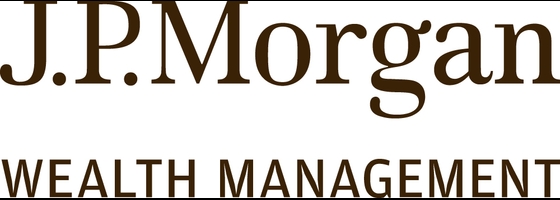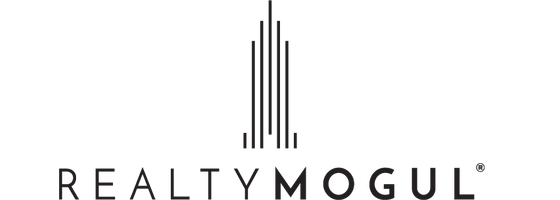- Low-risk investments, like high-yield savings and government bonds, pay higher returns.
- Homeowners with a fixed low-rate mortgage benefit as the relative mortgage payment amount decreases.
Inflation investments: How to hedge against inflation

Our evaluations and opinions are not influenced by our advertising relationships, but we may earn a commission from our partners’ links. This content is created by TIME Stamped, under TIME’s direction and produced in accordance with TIME’s editorial guidelines and overseen by TIME’s editorial staff. Learn more about it.
Inflation is the continual rise in prices for goods and services. Steady inflation is a healthy component of a functioning economy. But everyday items become noticeably more expensive when inflation rates rise beyond long-term averages. Rapid inflation can also adversely affect the cash sitting in your checking account or under your mattress.
To hedge against inflation, keep a minimal amount of cash in non-interest-bearing accounts and aim to own investments that earn above the inflation rate.
INVESTMENT AND INSURANCE PRODUCTS ARE: NOT A DEPOSIT • NOT FDIC INSURED • NO BANK GUARANTEE • MAY LOSE VALUE
The inflation rate should be a minimum target for investment returns. Achieving returns equal to inflation is like treading water: you aren’t becoming more or less wealthy. When inflation rises above the historical long-term average—around 3%—it becomes more challenging to achieve investment objectives because returns need to be higher, requiring more risk.
The following investments can help you meet or surpass the inflation rate and avoid falling behind.
Homeowners have a natural hedge against inflation in their properties. Average home values have historically risen faster than inflation over long periods. Furthermore, if you have a fixed mortgage rate, the monthly payment stays the same but becomes relatively less expensive as inflation rises.
Investment properties can provide the same inflationary benefits as primary homes, and landlords can also raise rents in line with local averages.
Not everyone is cut out for real estate investing or being a landlord. However, online investing platforms offering non-traded real estate investment trusts (REITs) can reduce barriers to real estate investment exposure.
RealtyMogul's Income REIT, for example, gives investors diversified exposure to real estate and is non-correlated to stock market fluctuations. The fund's total return has outpaced inflation since inception and provides distributions for those seeking investment income.
The U.S. government has two investment options designed to match the inflation rate. These investments provide consumers a low-risk option for protecting cash assets against rising costs.
Treasury Inflation-Protected Securities (TIPS) are marketable securities issued by the U.S. government with five-, 10-, or 30-year maturities. The principal of these bonds adjusts with inflation, measured by the Consumer Price Index (CPI), and the bonds pay interest. When the bonds mature, investors receive the principal amount, which typically increases over the duration.
Consumers can buy TIPS via TreasuryDirect or on secondary markets through a broker. Several exchange-traded funds (ETFs) are also available, the largest being the Vanguard Short-Term Inflation-Protected Securities Index Fund (VTIP) and Blackrock’s iShares TIPS Bond ETF (TIP).
Another option for government inflation-protected securities is I Bonds. I Bonds are non-marketable securities and can only be purchased via TreasuryDirect or tax refunds (IRS Form 8888). The overall interest rate is calculated based on a fixed rate determined at purchase and a varying interest rate that adjusts biannually based on the CPI.
There is a $10,000 annual limit on purchases per individual buyer, and I Bonds are illiquid for the first 12 months. The Treasury applies a three-month interest penalty on withdrawals completed in the first five years. After five years, redemptions are penalty-free.
Alternative assets are investments other than cash, stocks, and bonds. Some examples of alternative investments include private credit, fine art, venture capital, private equity, hedge funds, commodities, and digital assets.
Alternative investments have traditionally been commonplace for high-net-worth and institutional investors. Only in the past decade have innovative technology and a loosened regulatory environment led to the emergence of investment platforms that make it easier for retail investors to participate.
Returns can perform similarly or better than long-term stock market returns without daily price fluctuations. But these investments can involve higher risk and may only be available to accredited investors.
Investment platforms such as YieldStreet give retail investors access to multiple alternative assets, allowing them to diversify their investment exposure under one account.
Realty Mogul is a platform that offers access to REITs and other types of real estate investments.
Too much cash in a checking account is an all-to-common vulnerability. Inflation eats away at cash’s value when it’s earning little to no interest.
During the June 2022 inflation peak of 9.1%, high-yield savings rates were well below inflation. But as The Federal Reserve raised interest rates to halt inflation, savings rates eventually caught up. By February of 2024, the inflation rate had fallen to 3.2%.
You can limit the effects of idle cash by transferring funds from checking accounts to high-yield savings accounts. Today’s rate environment provides interest rates at around 1.5% to 2% above inflation, giving consumers a leg up on inflation pressures in early 2024, which may not last.
High-yield savings account benefits include Federal Deposit Insurance Corporation (FDIC) coverage and a savings rate near or above the CPI. Shop around to find the best savings rates.
When budgets are squeezed, consumers prioritize everyday products like food, beverages, tobacco, and personal products over discretionary purchases like cars, eating out, or luxury items. Therefore, stocks classified as consumer staples by the Global Industry Classification Standard (GICS) tend to be less sensitive to economic cycles and serve as a safe haven for investors during high inflation.
Some of the largest U.S. companies in this category include Procter & Gamble, Costco, Coca-Cola, Walmart, and Altria. Instead of trying to select the best performers, investors can buy consumer staple ETFs to diversify their inflation hedge with a pool of stocks less susceptible to inflation. State Street’s Consumer Staples Select Sector SPDR Fund (XLP) and Vanguard’s Consumer Staples ETF are two of the largest and most established consumer staples ETFs.
Keep in mind that while consumer staples stocks tend to rise when inflation increases, they can also fall out of favor when inflation normalizes.
Gold tends to hold its value in inflationary environments as investment managers seek ways to protect wealth with hard assets. Though many precious metals are perceived by buyers as inflation-protected assets, gold has held up better than metals with more industrial uses because of its long history of being a store of value and its use by central banks as a monetary reserve asset.
ETFs are the most accessible way to own significant investments in precious metals without acquiring the physical asset. StateStreet's SPDR Gold Trust (GLD) and Blackrock's iShares Gold Trust (IAU) are the two largest gold ETFs.
Long-term U.S. stock market returns have historically returned about 10% as measured by the S&P 500, while inflation has averaged about 3%. That makes U.S. stocks an excellent long-term hedge against inflation.
To beat inflation, long-term investors can buy index funds and ETFs tied to the S&P 500 or broader market indexes like the Russell 2000. Popular stock market ETFs to achieve this objective include State Street’s SPDR S&P 500 ETF Trust (SPY), Blackrock’s iShares Russell 2000 ETF (IWM), and Vanguard’s Total Stock Market ETF (VTI).
Sudden high inflation can trigger stock market volatility, so beware of severe short-term fluctuations and do not sell out of fear. Only invest in the stock market with funds you can keep invested for the long term.
Inflation affects your money by eroding the value and purchasing power of your earnings and savings. As inflation increases, so do the costs of everyday purchases and services.
Workers must earn annual wage increases above the inflation rate or risk falling behind financially. The same is true for savings. Cash in low-interest checking or savings accounts loses value as inflation persists.
Steady inflation is normal and healthy for the economy. When the costs of goods and services steadily rise year over year, businesses and consumers can confidently make spending and investing decisions.
Inflation is measured by the Consumer Price Index (CPI) through data compiled by the Bureau of Labor Statistics. The CPI tracks the average annual changes in prices consumers pay for a diverse basket of consumer goods and services.
The Personal Consumption Expenditures price index (PCE) from the Bureau of Economic Analysis is similar but lesser-known. It also monitors the prices of goods and services, but the data, formulas, and users differ.
The difference between the two is that the CPI measures the spending of urban households while the PCE measures the spending of all households plus non-profit institutions serving households.
Economists also measure inflation through the Producer Price Index (PPI), which monitors the prices that goods and services producers receive for their products.
All three inflation measures move in relative synchrony, but each offers a different perspective on how inflation impacts the U.S. economy.
The Federal Open Market Committee (FOMC) at the Federal Reserve is mandated to maintain stable prices so businesses and households can make sound financial decisions when borrowing and investing. It tames inflation by modifying the Federal Funds Effective Rate, or the Fed Funds Rate, the interest rate banks lend to each other.
Inflation is a persistent drag on income, spending, and wealth. However, normal inflation levels around The Federal Reserve’s target rate of 2% are healthy for the economy. But when inflation increases faster than the target rate or historical averages, it becomes essential for individuals to protect their wealth against inflation’s impact on money.
The inflation investments in our recommended list can help individuals mitigate the impact of inflationary pressures.
Limit idle cash and invest in assets that earn at or above the inflation rate. Investors may consider temporarily adjusting their risk tolerance to achieve higher returns in periods of high inflation.
The Federal Open Market Committee (FOMC) at the Federal Reserve maintains inflation control. It manipulates price stability using monetary policy and the Fed Funds rate, the interest rate banks use to borrow and lend to each other.
A higher Fed Funds rate slows lending activities and thus brings down the inflation rate. A lower Fed Funds rate stimulates the economy by making it less expensive for banks and businesses to borrow.
The best investments for the long term depend on several factors relating to who is investing, their investment objectives, and risk tolerance. For individuals, an age-appropriate portfolio of stocks and bonds has proven to be one of the best long-term investments. Real estate investments and a diverse pool of alternative investments can achieve similar returns.
The information presented here is created by TIME Stamped and overseen by TIME editorial staff. To learn more, see our About Us page.





